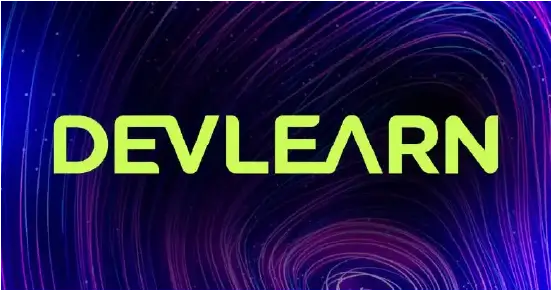When developing eLearning, instructional designers must identify four important things:
- The reason they are developing the eLearning—the skill gaps to be addressed and the business outcome(s) to be supported
- The value of the skill gaps and the business outcomes (or the cost of not dealing with them) in order to set priorities
- The subject domain
- The learners
The way instructional designers identify those things is the training needs assessment. The complete needs assessment must happen before design and development begin. Unfortunately, in eLearning we too often start with some idea of “the subject” and of “learning objectives” that were created without consideration of skill gaps, the value of fixing the gaps and supporting the business outcomes, the priorities for action, or the identity of the learners. Leaving out the identity of the learners is a particularly huge mistake. Knowing about the learners is invaluable in knowing how to engage those employees.
The marketer’s secret: personas
No marketer would start a campaign without knowing who the buyers are. Marketers know that they have to connect with specific people on the basis of what is important to those people.
As part of your needs assessment, you need to include your employees/learners. Everyone is not the same. You can’t expect generic training to connect with your learners in their world.
The key is to create personas for your target groups. In this article, I will outline a way to develop personas, one of the techniques marketers use that enables them to engage their target audience. It will work for you, too.
Why do you need personas?
Crafting personas is a central part of a strong eLearning development strategy, as they help establish a clear picture of the audience. In eLearning development, a persona is a representation that helps you get a picture of the people you are training and the way to engage them.
In a recent article in Learning Solutions, “4 Marketing Ideas to Borrow for Better Learning Experiences”, Danielle Wallace points out the importance of understanding your learners:
“As with the campaigns marketers create, we in the instructional design field need to focus on our learners’ needs and connect with them. Consider learner personas and other techniques to bring your learners to life so you can then cater to their learning needs. This is important not just for text composition of the content, but also in how the content is put together and displayed, and the design and multimedia elements accompanying it.”
What I describe in the rest of this article is a distillation of approaches used by actual marketing professionals, software developers, novelists, and others to create personas. It is not particularly how Danielle would teach you to do it, but it will get you started. Read to the end of the article to find out how to get more ideas for learner engagement from Danielle based on marketing.
Creating personas
You will probably find that you will need more than one persona, but not a large number. Three or four is often the maximum number for eLearning. Typically you will want a persona for each significant group of people within your audience. As you identify the significant groups, think of an imaginary person who would represent each one. This is like creating a character in a novel; you will be thinking about their characteristics as these relate to the course. You will give each persona a made-up name to go with the made-up person.
Think about this made-up person and their:
- Age, gender, department or physical location, family situation
- Work history (where they are today, their seniority)
- Goals in life, and how their job is helping them achieve them (or not)
- Reasons for taking the training. How do they feel about that?
- Personality
For the type of training you are designing, for each of these made-up people, consider:
- What matters most?
- What matters least?
- What will you have to include to engage them?
- What will you have to leave out?
- What is this person willing/unwilling to do?
- What does this person already know? What will they have to unlearn?
If you are working with a development team, brainstorm your responses to the bullet points above. On a single page for each persona, write a brief paragraph to describe that person—think of this as a character sketch, but not a biography. Keep it brief. Make them as real as a character in a novel, make them relevant to the organization and the job you assigned them (in other words, they need to clearly be someone who would have been hired), but not someone that seems to be an actual employee.
Go through magazines and scan or cut out photos of people from advertisements—one photo per persona that looks real and credible, given your brief one-paragraph description—and paste or insert it at the top of the page.
If you do this using physical paper and photos, you can assemble all of the personas on a whiteboard in your work area for all of the designers in the project to see, or you can put them all in an online file in a team Dropbox.
The purpose of this work is to give you, the designer and the members of the design team, a literal picture of employees who will take the eLearning. It will give you insights that will help you design the details in a way that will engage the actual employees.
Want more marketing ideas?
Danielle Wallace is the chief learning strategist at Beyond the Sky, a provider of custom learning solutions. As a marketing executive with Procter & Gamble and PepsiCo, she learned strategic marketing and advertising principles, which she now applies to learning and development to make learning stick. Danielle is also a certified training and development professional (CTDP) and her monthly infographics on applying marketing into L&D can be found at www.beyondthesky.ca
Danielle will present the session “Can’t Get You Out Of My Head: Engagement Techniques From Marketing” in The eLearning Guild’s Making Learning Stick Online Conference, February 19-20, 2020. In her interactive session, you’ll learn four more key techniques that marketers use to make their messages stick. You’ll explore the role of message visualization, drama, emotions, and compelling text. You’ll examine both marketing and training examples in order to reapply concepts to your own work.
Registration for the Online Conference is open. Register today!







